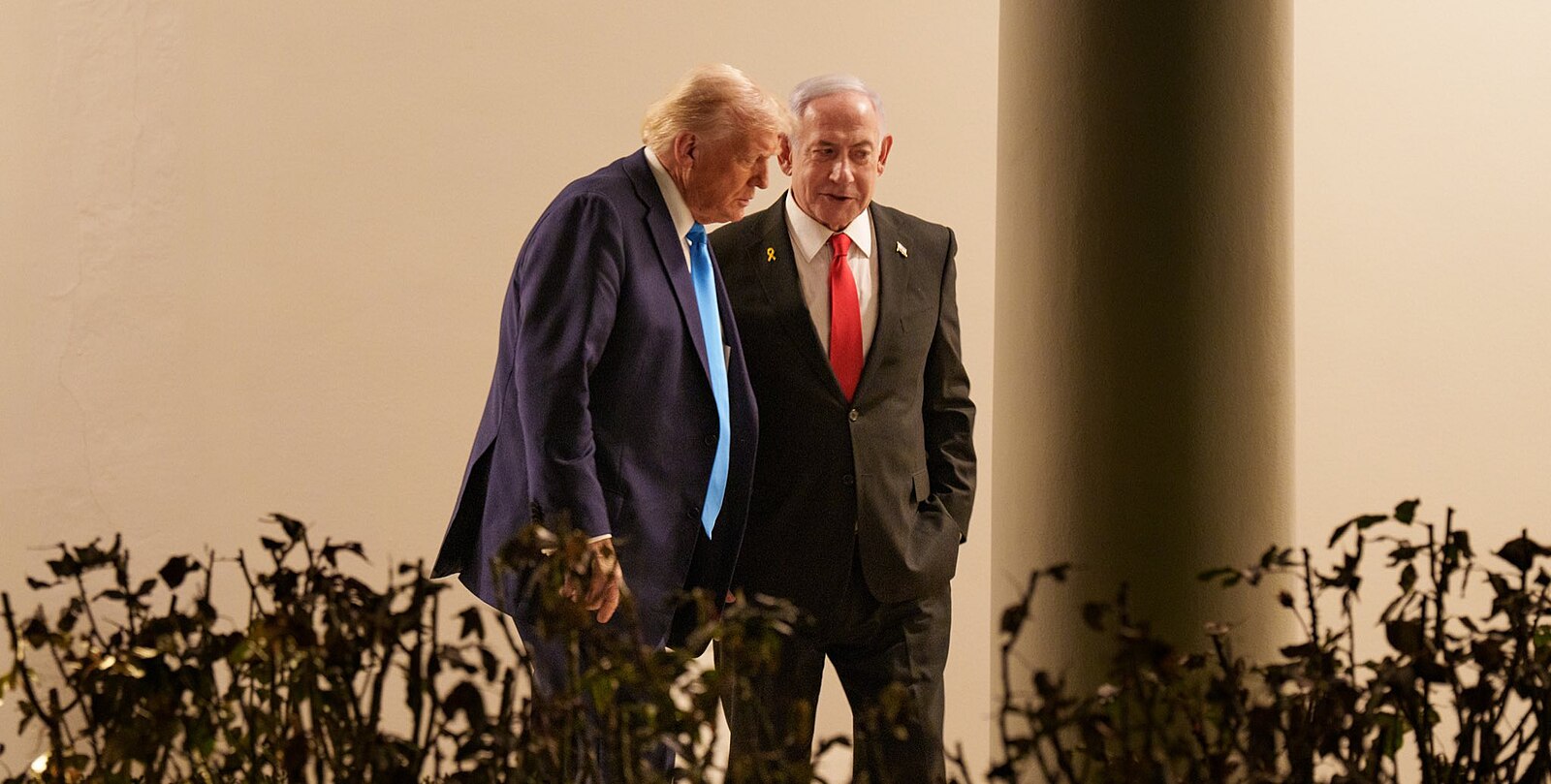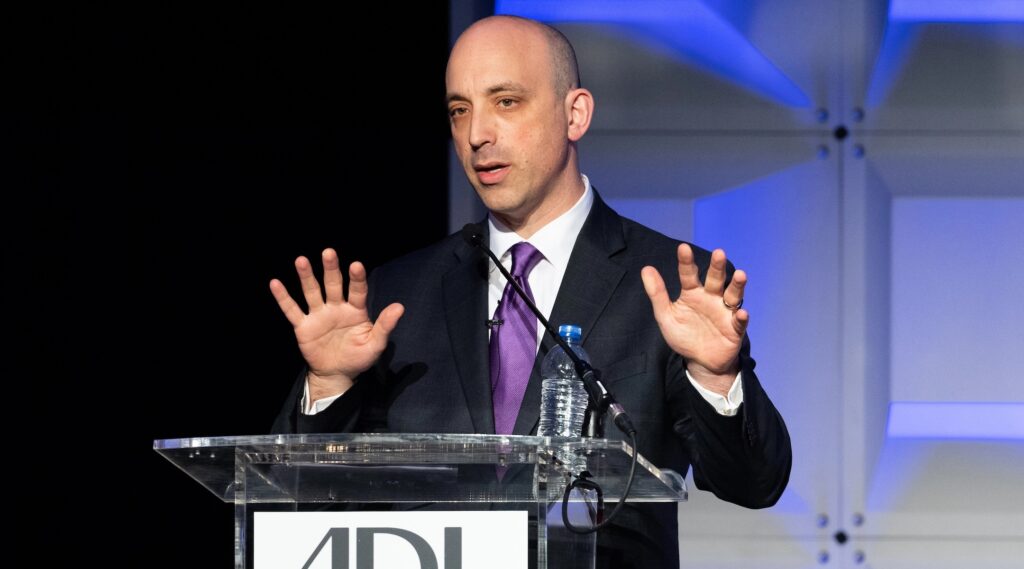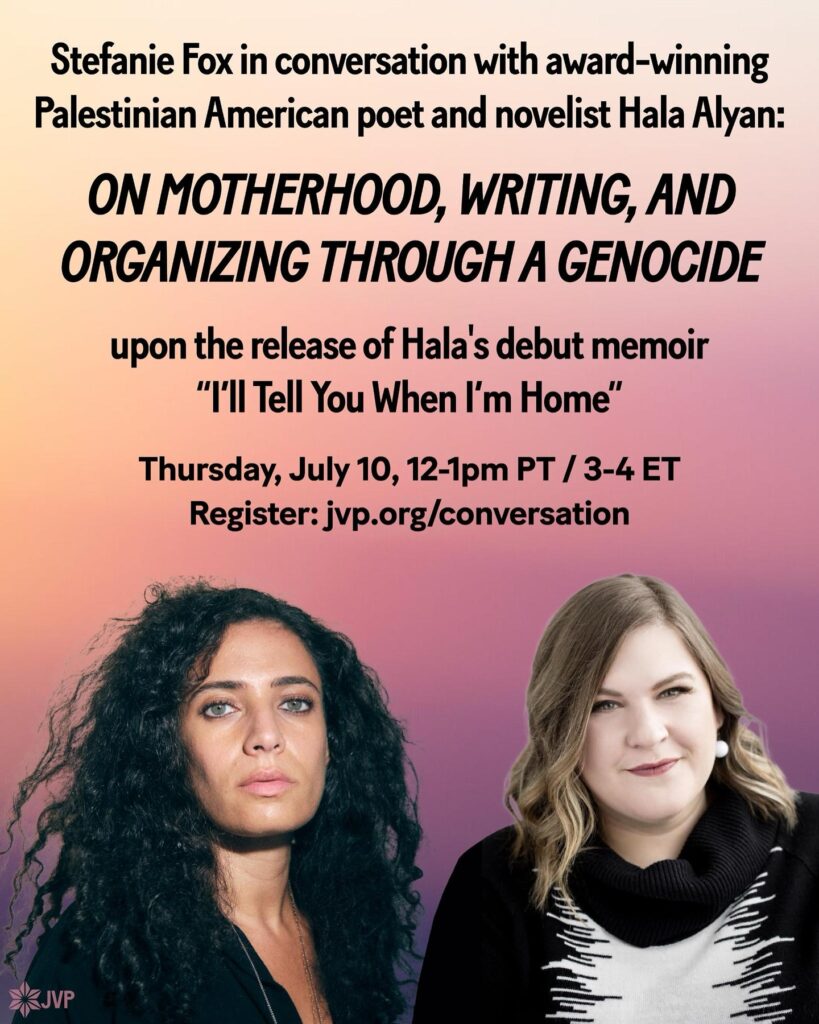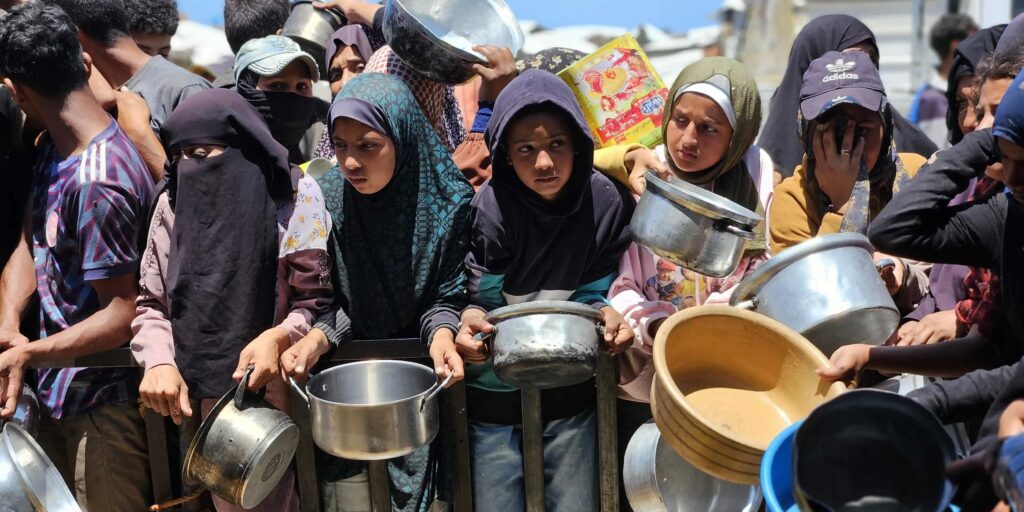
Why our movements are still fighting for a lasting ceasefire.

International fugitive Benjamin Netanyahu is in Washington, D.C. this week, his third visit with President Trump since January. His stated purpose is to discuss a ceasefire agreement in Gaza.
This is a moment rife with contradiction, and as Palestine solidarity activists we must hold two truths:
- After over twenty months of genocide, Palestinians are desperate for any relief from Israel’s relentless bombardment and daily massacres at Israel and U.S.-run aid sites.
- Netanyahu is seeking a ceasefire on his terms: allowing Israel to continue the genocide and carry out a massive campaign of ethnic cleansing that would expel remaining Palestinians from their homes forever.
As a movement, we must remain determined to fight for — and win — a lasting ceasefire, one in which Palestinians can determine their own futures.
Palestinians desperately need a ceasefire right now. That must still be our central demand.
It was only a few months ago that Israel’s government unilaterally shattered a previous 60-day ceasefire agreement. There’s little reason to believe that Israel will not violate a future agreement. It’s also clear that Israeli leaders hope to use the ceasefire period to put into motion their plans to permanently displace Palestinians from Gaza.
Yet every day a ceasefire agreement fails to come to fruition, hundreds more Palestinians are gunned down by Israeli forces while trying to collect aid, crushed under Israeli bulldozers while defending their homes, and torn apart by Israeli bombs while huddled together in makeshift tents.
Palestinians in Gaza have been fighting to survive Israel’s campaign of annihilation for nearly two years. Israel has killed over 84,000, according to one estimate, and the death toll is likely much higher, as famine sets in and thousands of men, women, and children remain buried beneath the rubble.
In March, the Israeli government cut off all aid to Gaza, bringing over two million Palestinians to the brink of famine. After more than 100 excruciating days, Israel lifted its blockade, allowing a trickle of food and medicine into Gaza. It’s not nearly enough to stave off mass starvation, which was never Israel’s intention. Instead, Israel has transformed aid into a tool of genocide.
When Israel lifted its blockade, it took control over the distribution of aid, circumventing international humanitarian organizations and the U.N. and concentrating aid distribution in Gaza’s far south. Massacres of Palestinian aid seekers at U.S.-backed, Israeli-controlled aid sites are now a daily occurrence.
As famine sets in, the Israeli government is sowing further chaos by arming and funding criminal gangs across Gaza — the same groups accused by international humanitarian groups of looting aid trucks. Some of those gangs have been closely involved with the operation of the Israeli and U.S.-run aid sites where hundreds of starving Palestinians have been gunned down.
“I turned around and saw my mother lying on the ground — shot in the head by Israeli forces,” Ahmed said. “My sister and I threw ourselves over her body. If we had stood up, we would have been killed too. They were firing directly at us. We lay there for over an hour.”
-12-year-old Ahmed Zidan describes his mother being killed at an Israeli and U.S.-run aid site
What’s the ceasefire agreement on the table?
In between nominating Trump for the Nobel Peace Prize and flaunting his “historic victory” in Iran, Netanyahu spent this week in talks with the President and top U.S. officials about a proposal for a temporary ceasefire agreement in Gaza.
The Trump-backed plan is for a 60-day ceasefire, with no guarantee that it would bring about a permanent end to the genocide. Another major sticking point for Palestinian negotiators: Israel’s government has thus far refused to return control over the distribution of aid to the U.N. and international humanitarian organizations. Israel’s “death trap” aid sites — intentionally concentrated in Gaza’s south to facilitate Palestinians’ mass displacement — would likely remain in place.
That’s music to Netanyahu’s ears. For months, Palestinians desperate to feed their families and survive Israel’s onslaught have been intentionally corralled into smaller and smaller areas in Gaza’s far south. Now, Netanyahu is already making plans for the day after a ceasefire agreement is reached: He wants to construct a so-called “humanitarian city” — effectively a concentration camp — along Gaza’s southern border with Egypt, on the ruins of what was once Gaza’s southernmost city, Rafah.
This is an obvious ploy to force a mass exodus of Palestinians from their homes in north and central Gaza, cementing permanent Israeli control of the territory. In the last week, the Israeli military issued evacuation orders for southern Gaza’s Khan Younis, a city located north of Rafah. They have instructed Palestinians to move west toward al-Mawasi, an already overcrowded tent city along the Mediterranean Sea. Today, nearly 90% of Gaza falls under Israeli military “evacuation” orders.
And if Israeli leaders have their way, Palestinians fleeing to al-Mawasi won’t be able to remain there for long. On Monday, Israel’s Defense Minister Israel Katz said the government intends to force half a million Palestinians it corralled into al-Mawasi to relocate to its planned “humanitarian city” on Gaza’s southernmost border. Israeli leaders have not minced words about their ultimate aim: to remove Palestinians from Gaza entirely. During Netanyahu’s meeting with Trump on Monday, the PM said Israel was “getting close to finding several countries” willing to take in Palestinians from Gaza.
What do our movements do now?
Our movements can navigate these contradictions if we move in unison and root ourselves in our collective responsibility to the Palestinian struggle for liberation. For the last twenty months, we have been fighting for a lasting ceasefire. In the event of a temporary ceasefire, our focus will shift to ensuring that agreement paves the way for a permanent end to the genocide.
Even if a permanent deal is reached, our work will be far from over. Nearly two million Palestinians in Gaza have been forcibly displaced. Most of Gaza lies in ruins and it will take billions to rebuild. Amid mass starvation, it remains an open question who will control the distribution of precious humanitarian aid. Ahead of Netanyahu’s visit, the State Department signed off on over $500 million in U.S. military funding to Israel, weapons that will certainly be used to kill and displace Palestinians even after the genocide is over.
Despite the uncertainty of this moment, the core of our mandate in this larger movement remains the same — to continue to resist the murder and displacement of Palestinians being carried out in our name.
Take Action: Largest U.S. labor union rejects the ADL.

The 3 million-member National Education Association voted on July 6 to cut all ties with the Anti-Defamation League (ADL), stating that it “is not the social justice educational partner it claims to be.”
The ADL only pretends to be a civil rights organization. In reality, it operates as a pro-Israel lobbying group, focused on co-opting and abusing accusations of antisemitism to smear criticism of the Israeli government as bigotry.
Tweet at the NEA now to thank them for taking this historic step.
Upcoming event: Special Power Half-Hour for Gaza.

Join us at Power Half-Hour this Thursday for a special conversation between JVP executive Director Stefanie Fox and Hala Alyan on motherhood, writing and organizing through genocide.
What we’re reading: “They Went to Get Flour With Their Mother in Gaza. ‘She Came Back in a White Shroud.’”

Aseel Mousa reports for The Intercept about the massacres of Palestinians at Israeli and U.S.-run aid sites.

With nearly 100,000 subscribers, the Wire is one of the largest American publications dedicated to justice. Every week, we cover important news from Palestine, the United States, and the Palestine solidarity movement — and provide ways to take action.
Explore Resources
Get The Wire
With nearly 100,000 subscribers, the Wire is one of the largest American publications dedicated to justice. Every week, we cover important news from Palestine, the United States, and the Palestine solidarity movement — and provide ways to take action.